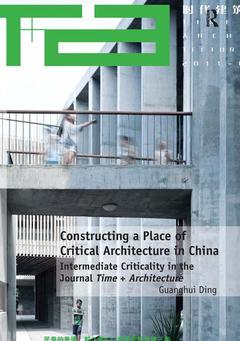Constructing a Place of Critical Architecture in China Intermediate Criticality in the Journal Time + Architecture
Auteur : Ding Guanghui

Date de parution : 10-2015
17.4x24.6 cm
Disponible chez l'éditeur (délai d'approvisionnement : 14 jours).
Prix indicatif 164,74 €
Ajouter au panierDate de parution : 10-2017
17.4x24.6 cm
Disponible chez l'éditeur (délai d'approvisionnement : 14 jours).
Prix indicatif 58,78 €
Ajouter au panierThèmes de Constructing a Place of Critical Architecture in China :
Mots-clés :
chinese; architects; architectural; journal; cultural; context; qingyun; contemporary; private; design; Liu Jiakun; Qingyun Ma; Contemporary Chinese Architecture; Private Design Firms; Chinese Communist Party; Shan Fang; Wu Gang; Architectural Criticism; Chinese Architecture; Intermediate Criticality; Liang Sicheng; Gated Communities; Scholar Garden; Chinese Architects; Chinese Cultural Context; Architectural Journal; Architectural Periodicals; Journal’s Publishing Practice; Traditional Chinese Architecture; Shui Fang; South China Institute; China Academy; Tsinghua University; Socio-political Engagement; Zhang Yufeng



